FISH
Duncan McCallum // Photography by Arian Stevens
THIS IS THE LONG GAME OF LIFE, A MOUNTAIN CRUMBLING TO THE SEA, A CYCLE PLAYED VISIBLY AND OPENLY IN OREGON’S HIGH DESERT. FOUR HUGE GLACIATED VOLCANOES DOMINATE THE SKYLINE OF THE HIGH DESERT PLAINS. BARE BLACK LAVA FLOWS, SOLIDIFIED YESTERDAY IF USING THE GEOLOGICAL CLOCK, PENETRATE THE DEEP LODGE-POLE AND SEQUOIA FOREST.
Ripples of silver brown water flow west, and even in the shallows the force of it grips my legs, pulling me with it. A small stone, dislodged, bounces onto my foot with a gentle tap. It settles momentarily before it continues its journey through the aeons to the coast. This is the long game of life, a mountain crumbling to the sea, a cycle played visibly and openly in Oregon’s High Desert. Four huge glaciated volcanoes dominate the skyline of the High Desert Plains. Bare black lava flows, solidified yesterday if using the geological clock, penetrate the deep lodge-pole and sequoia forest.
As I wade deeper, trying to imagine what is underneath the moving silver sheen, basalt boulders the size of dustbins trip and trap my legs. My wading stick vibrates to the rhythm of the river as I try to position myself in a safe place to start the hunt.
Until now, I had associated fishing with the pressure of trying to please an impatient and critical father. Brown trout and salmon days in Scotland filled with the anxiety of doing something wrong. An imperfect cast, a lost fly, a snagged line or fumbled knot. Whilst my brother – maybe more accommodating, certainly more patient – persevered in that critical environment, I soon broke the family tradition and swapped rod for rope, the cliff over the bank and the air around my feet for the dark aggravated water.
But here, it is a different country; it could even be a different millennium, no stuffed tweeds, cap-doffing, tip-handed gillies. We have swapped the Land Rovers for flatbeds, the Victoriana, locked gates, and poacher patrols for the big-sky country. It’s classless and refreshing.
Fishing was an impenetrable art in the Highlands; secret knowledge only imparted in grudging dribbles, but as the days unfolded, it became clear that this was a game of the imagination, expansive open gestures and a generosity as large as the landscape.
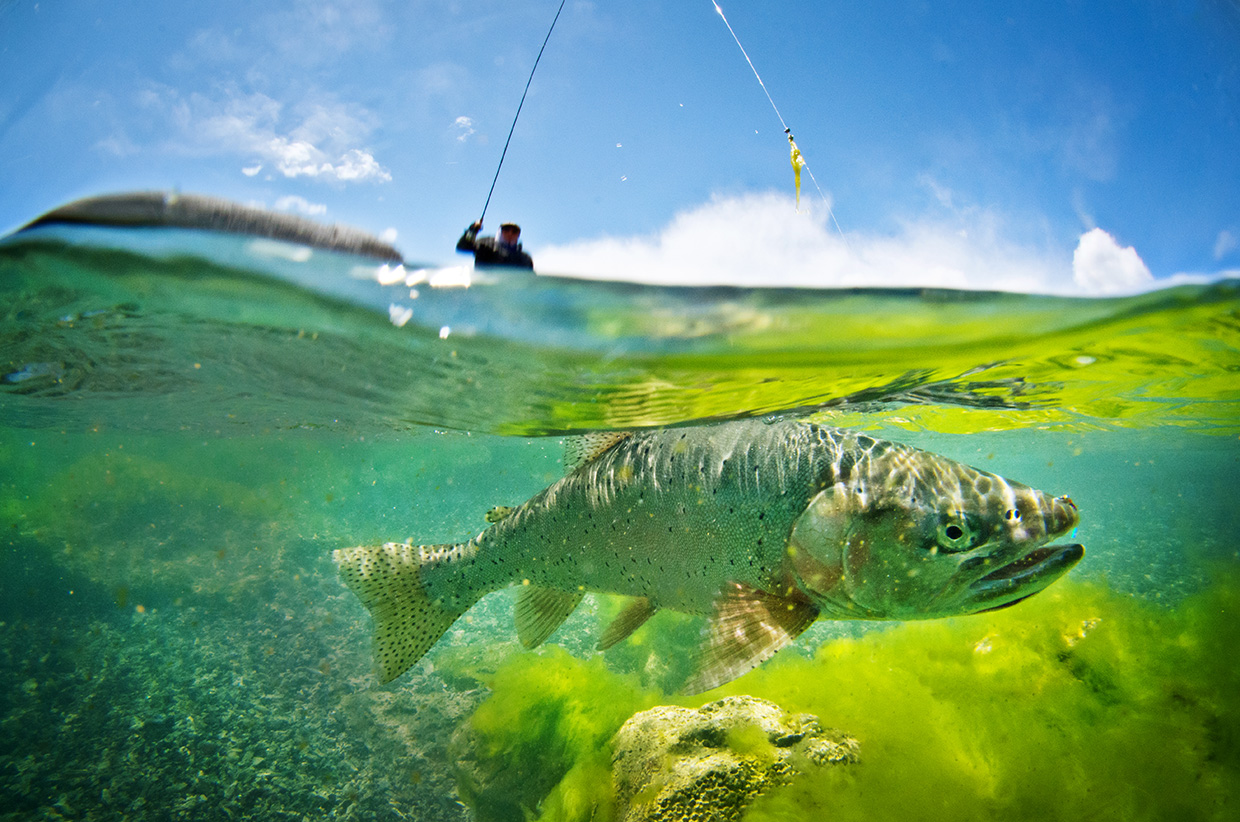
A river must be approached like a foggy city seen from above. There are clues to the highways, restaurants and dormitory areas, but they are mostly hidden underneath a veil of ever-moving, opaque sheen. The fish can be imagined as inhabitants or commuters in this watery city. Some, the locals, stay in one area and dart in and out of the fast-food cafes, or chill in the eddies for a rest. Others with an important task to undertake flash through the suburbs, forced onwards by the ultimate Darwinian impulse of procreation. Some like gangs of teenagers hang about in the shallows or dark corners, hassling the locals whilst they grow big enough to know better – then, with the confidence of youth, leave the river for the open ocean of experience and growth, only to return to their place of birth, mature and fat, to breed and then die, belly up and wasted.
Each of these tribes will chase a different lure, a promise of an instant reward but with a barbed and potentially fatal finish. The fisherman is a drug dealer fooling the addict into taking that final fix. The secret is to understand this underwater city, to have an imaginary map of its highways, byways and hotels and to know how the locals and visitors behave. What is required is someone with the ‘knowledge’.
Demystifying the river knowledge is a revelation. No longer am I casting blindly into the dark churning tempest. But I am learning the places where the fish lie and travel, the times they feed, when they are affected by changes in cloud cover, temperature, and season.
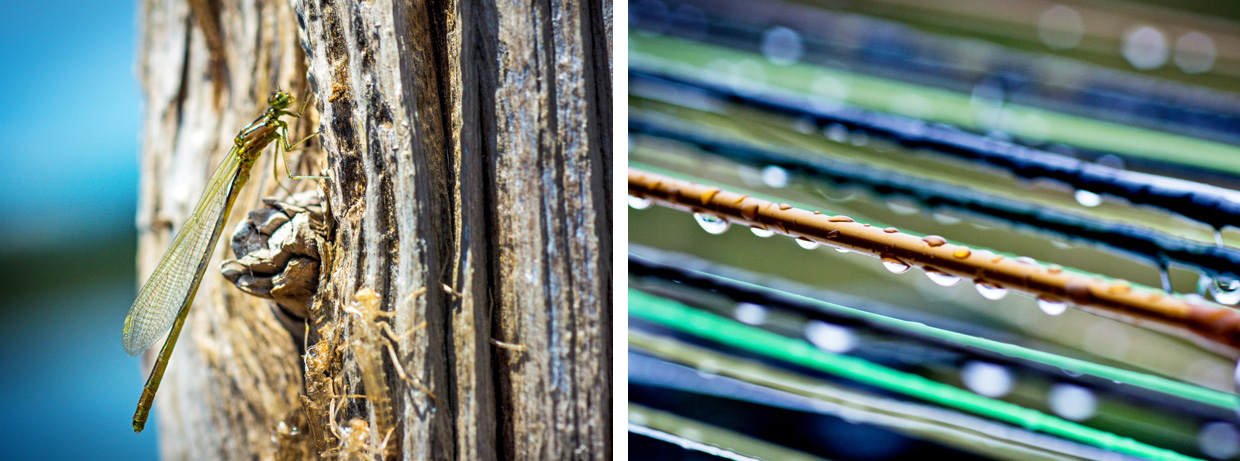
It’s a skill that has depth, emotional value – a deep appreciation for the cycles of life, death and rebirth. To know a river is to know the landscape, where the headwaters are, the minerals and texture of above and below, the natural world. In my youth a passing merganser was a hated predator; an osprey, a thief cheating a wading rod out of an expensive prize. But to my mentor, Steve, it is an indicator of the health of the landscape and the water. The deep colour of a beautiful landscape is to be shared and appreciated, not protected and shielded from the prying masses. Steve’s father sits on his shoulder accompanying him, and the river flow brings him closer to an obviously deep connection. I stand now a man and my sense is not one of being accompanied by warmth, but a feeling of great loss and sadness. It is not one of blame or pity, we are what we become, but it is message to us all. Share with openness and joy and take the time. My fly-line indicator dips with the unmistakeable tug of interest, but I’m momentarily lost in thought; I strike too late and the empty line flies out of the river. Someone had a lucky escape.
For 30 minutes I have worked a little stretch of fast-moving water where food debris runs past a slower lie. Trout run in and out of the watery conveyor belt, snatching at passing morsels, and this is where I am running my line. The secret is to lay the line above the feeding area and ‘correct it’, so the flies race in the current, unfettered by the heavier line behind, looking natural and tasty. It seems like an utterly random and impossible set of coincidences that could unite man and fish, by line and fly.
I break from the concentration of following the indicator through the rough water and I look into the distant brown parched hills. They shimmer, my vision momentarily affected by my intense observation of an ever-moving surface. Native American mustangs from a herd of 1500 wild horses come to the bank to drink. The land is dust dry after 200 days of drought. Yet the river is cool and alive. It has a remarkable source: east of the Cascade Range, the Ring of Fire Volcanoes erupt through the older bedrock, like huge red festering boils on the skin of the land. They are white tipped by shrinking glaciers, and hot pressure boils underneath, waiting for some future day of release. It is the snowmelt from these 10,000ft-high cones that feeds the Deschutes (or Towarnehiooks) headwaters at Little Lava Lake on the slopes of Mt Bachelor. The volcanoes have remained relatively stable for some time, but the river – which unusually flows north, its western path cut off by lava flows – is a relative newcomer to its current route to the sea. A trade route and source of food for the Native Americans, it was a major barrier to westward expansion from 1800 onwards.
IT’S A SKILL THAT HAS DEPTH, EMOTIONAL VALUE – A DEEP APPRECIATION FOR THE CYCLES OF LIFE, DEATH AND REBIRTH. TO KNOW A RIVER IS TO KNOW THE LANDSCAPE, WHERE THE HEADWATERS ARE, THE MINERALS AND TEXTURE OF ABOVE AND BELOW, THE NATURAL WORLD.
I strike again at the tugging line. This time the hook is lodged and the struggle begins. It is a split-second response and I am just fast enough to make this one count – it’s a game of percentages. 50% of rises are missed, the hook pulled out of the mouth without it engaging. In the shallow water there is nowhere for the fish to go and it leaps out of the water, flashing silver-red in the sun. Rainbow trout fight hard but in the aerated water it’s hard for it to make away from the shallows. My rod twitches and bends alarmingly, the fish occasionally visible below the surface. After a few minutes the struggle is over and the fish is drawn into the net. Today is the animal’s lucky day – we are playing ‘catch-and-release rules’ – we are playing with our food. With wetted hands, so as not to burn the fish’s skin, the hook is carefully dislodged and the fish is released back into the flow. Over the next few hours our small party of three nets and releases 15 trout and white fish. The trout are willing victims it seems, but a bigger prize lurks in the depths.
I NEED TO MOVE BUT THE COLD SEES ME STUMBLE AS I ORDER MY LOWER LIMBS TO MOVE. THE WATER PRESSURE COMES AS A SURPRISE RESISTANCE TO FORWARD MOVEMENT. I MUST BE CAREFUL NOT TO TRIP AND FLOP INTO THE RIVER – THE CONSEQUENCES OF WADERS FILLING WITH WATER, BECOMING A DROWNING ANCHOR DON’T FILL ME WITH PLEASURE.
I am shaking uncontrollably as the cold seeps into my bones; the chest-deep water is taking its toll. Standing still, holding back the river, has meant my legs are frozen in stasis. I need to move but the cold sees me stumble as I order my lower limbs to move. The water pressure comes as a surprise resistance to forward movement. I must be careful not to trip and flop into the river – the consequences of waders filling with water, becoming a drowning anchor don’t fill me with pleasure. Back at the dory I change my rod and rig to a heavier set, with a large fat fly at the barbed end. This lure is one inch long and much heavier, so it sinks deeper and looks fat and succulent.
Steelhead is a uniquely west-coast species of sea trout. Weighing in at up to 24kg, they are the ultimate prize. Having left the river they feast on eels and small fish in the Pacific, to return to the rivers, much larger, slim and fit, ready to continue the cycle of life. We drift down the river for another half mile, passing mountain lion canyons, fringed by 300 high basalt columns of once deep, cooled lava. These cliffs are home to turkey vultures, nature’s flying recycling plants, and empty osprey nests are now raven roosts whilst the owners holiday in the warmer southern lands. Countless Canada geese drift south overhead. Winter is coming. Drifting downstream, occasionally rocking through small rapids, time passes beautifully; there is no rush to hunt, no need to, as the river will be there tomorrow. The pace is a remarkable gift, easy, fun and rare. It is not often we can share such a place so loved and appreciated with no agenda other than floating, talking and laughing. Between bouts of concentration and indicator watching on the silver velvet, it feels like home.
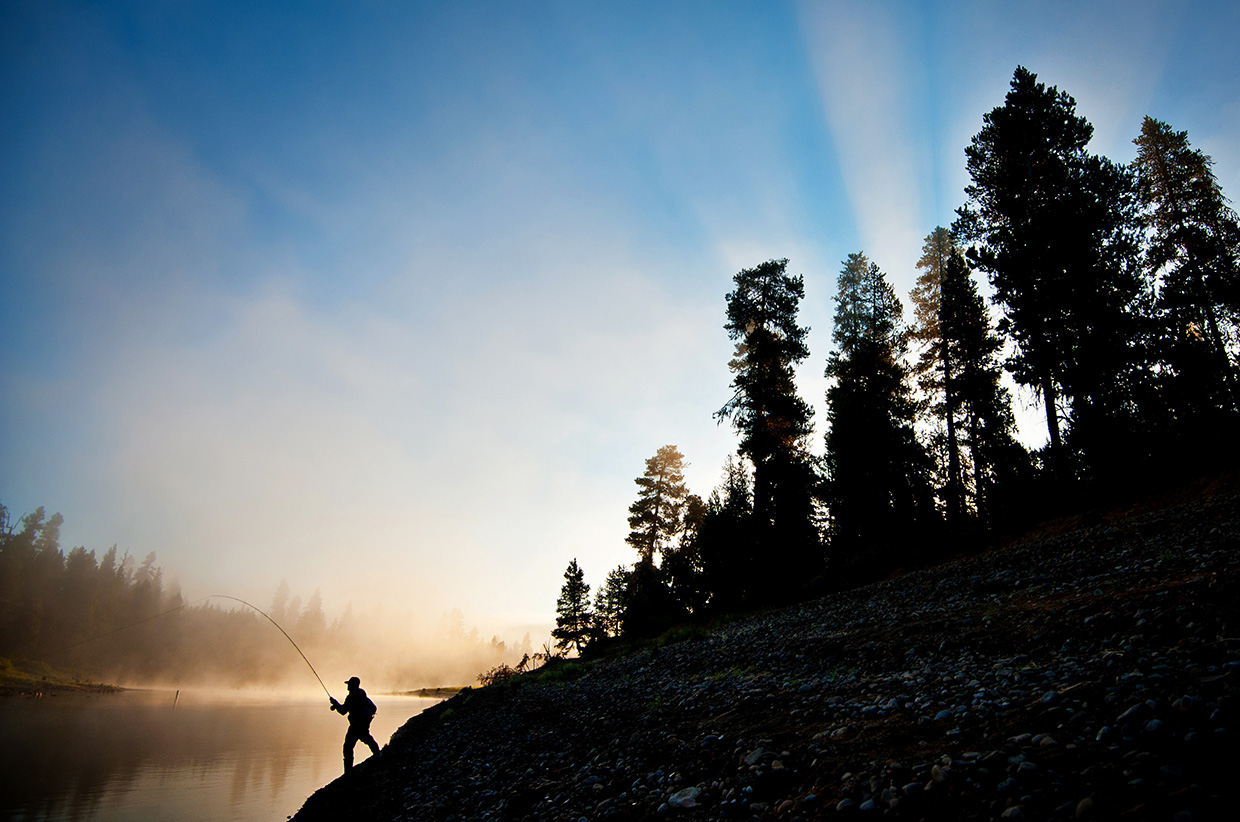
The anchor is now lodged on a tree and standing deep in the heavy flow. There is a hard deep tug. I strike against the current, diagonally away from the water flow and it feels as though the line is stuck on the riverbed, but then it shakes and pulls deeper. This feels different, no frantic trout waving and skipping; the line feels dense and heavy. Steelhead often sit for a moment as though trying to work out what had diverted them from their natural rhythm. The line slackens off completely as the fish darts towards me, and frantically I reel in line to keep the pressure on the hook. The fish turns and now runs downstream. I take my hand off the reel and line runs out under the inertia break. It’s a lovely familiar sound, zip!, a big fish fighting. Keeping the rod tip low, at times in the water, I try to leave the fish deep in the water for the moment. A fish dragged to the surface naturally fears the light where the predators patrol, and will panic and fight harder. Little by little I ease the fish towards me. Sometimes it will run, sometimes it moves diagonally across the stream. Its silver brown underbelly occasionally flashes when it nears the surface. Reel turn by turn, I bring the animal closer towards Steve’s waiting net. This is a critical moment and one that has to be faced, the moment that every fly fisherman dreads. As I lift my rod skywards to lay the fish head-up and draw it into the net, the fish flicks its tail, my rod pops straight and the line arcs into the blue, released and empty.
I feel no real disappointment as the fish runs free, only a fabulous shared moment of excitement. After all, time on the river is a game of odds, where there is no real win or lose, if your prize is the total experience. To know this, however, is the trick. As I grow older the goal is now not the prize or trophy or awards, plaudits and accolades. No longer are early alpine starts to be endured because they get you to the end task. I now enjoy the blurry-eyed discomfort, the break in the routine. It’s a lesson hard won and it took far too long to appreciate this circle. Sitting in the deep dusk, beer in hand, drifting along accompanied by the distant goose calls, sitting with friends talking, listening and loving, sometimes it takes someone else’s son to show you the value of where you have come from.
Duncan writes for many publications on adventure sports and travel with a very personal perspective, “the journey its self is not so important, what is though, is the life the journey brings to you the individual”. Currently Duncan is leading the development of a National Climbing Hub in the Highlands of Scotland.
Photographer: Arian Stevens
Website: www.arianstevens.com
Facebook: Arian-Stevens-Photography
Instagram: @arianstevens
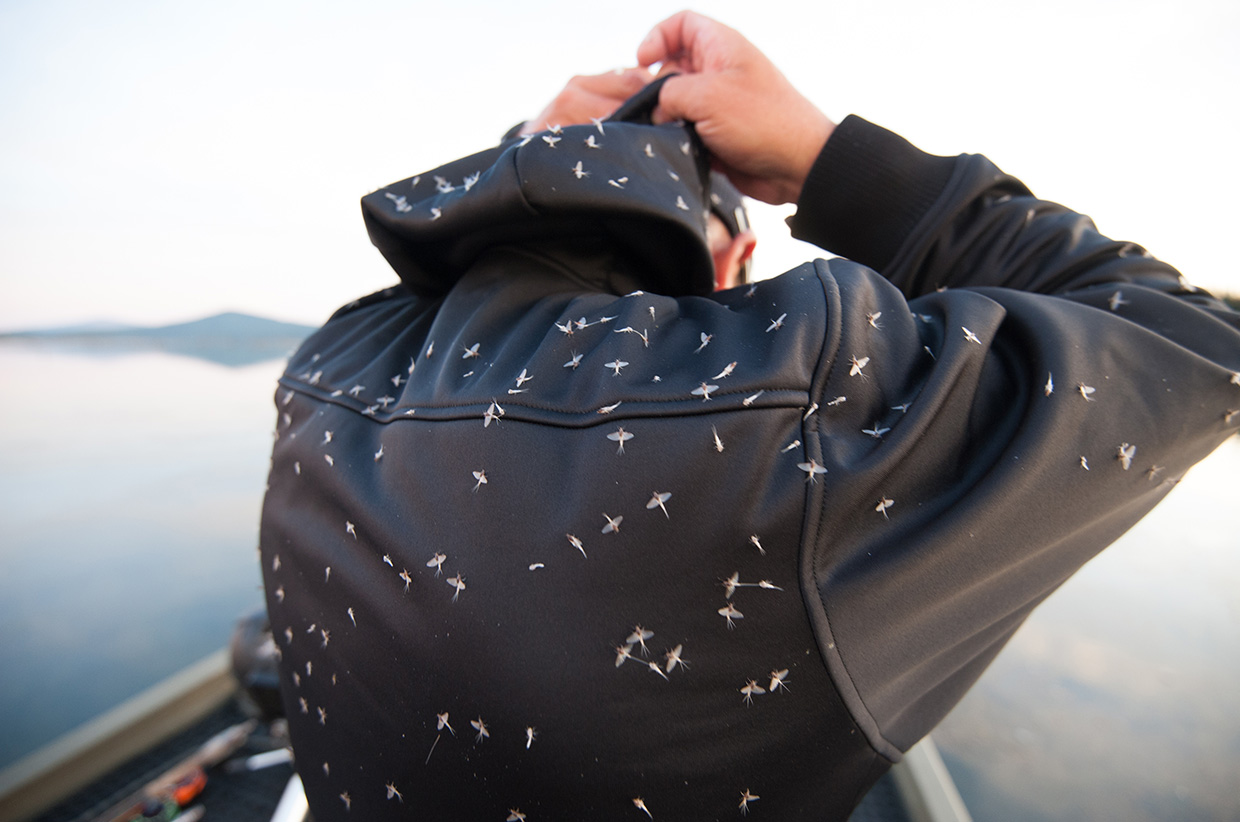
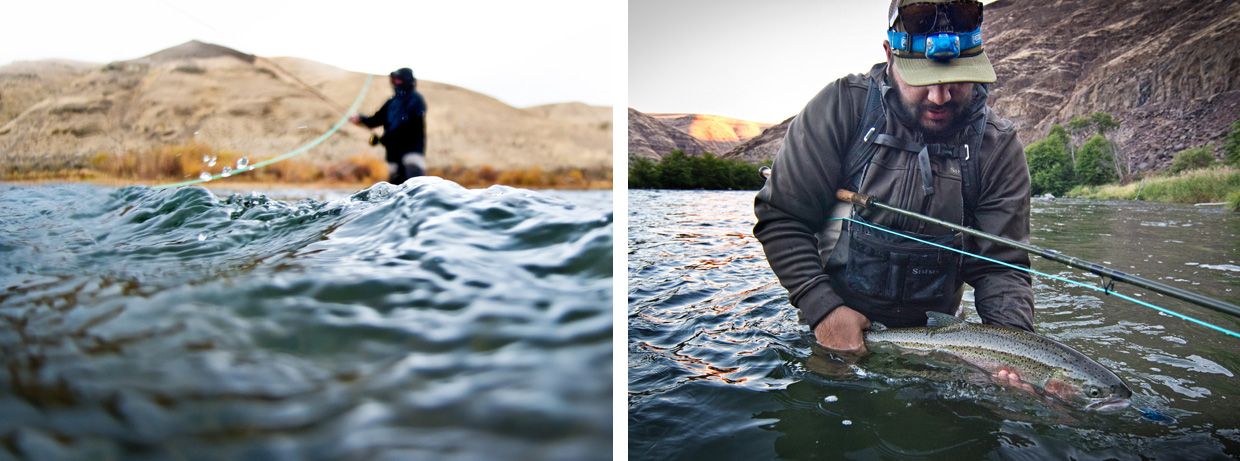
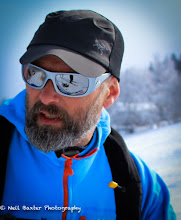

No comments:
Post a Comment